Why does pumpkin rot in the garden, what to do with this problem and how to prevent its appearance
Pumpkin is a useful product used in cooking dishes in many countries. In the garden, this vegetable is one of the most popular due to its unpretentiousness and long shelf life. However, despite the fact that the culture is easy to care for, gardeners often face the problem of damage to the fruit in the garden.
Why does the pumpkin rot in the garden, how can this problem be solved, what nuances should be considered when growing this culture - you will learn all this from our article.
The content of the article
How to find the problem
The apparent integrity of the fetus can be deceiving. Even minor dents and discoloration can indicate the onset of decay. Often, damage to the pumpkin becomes a consequence of the disease. To correctly identify the source of the problem, you need to pay attention to the stem and foliage of the plant.
Pumpkin often starts to rot in high humidity. After long rains, you should go around all the beds and check the fruits for damage.
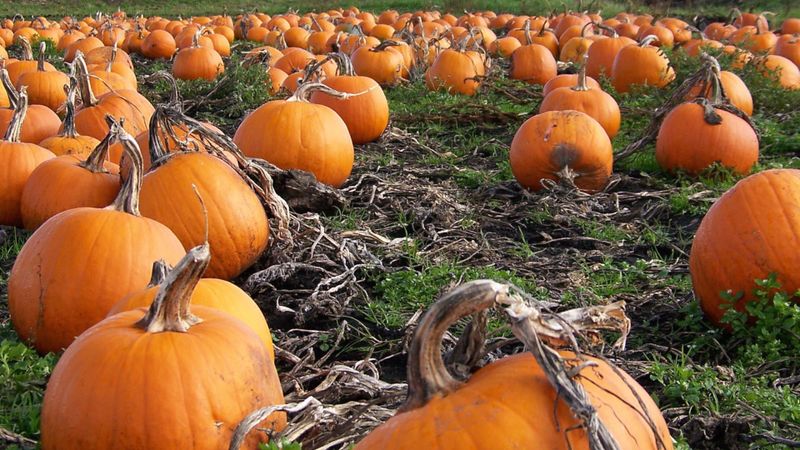
Possible reasons
The quality and quantity of the crop is affected by plant health, pollination, gardening and watering.
Diseases
The following diseases become the cause of pumpkin rotting:
- white rot;
- olive mold;
- alternaria;
- bacteriosis.
In addition to diseases, the fetus can also rot due to care errors.
Pumpkin is not pollinated
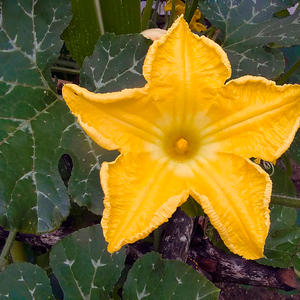
The pumpkin begins to bloom 50–55 days after the first shoots appear. First, male flowers appear, and after 7-10 days female flowers appear.
The ovaries can rot in cold, damp weather. Pollination of plants is produced by different groups of insects. Due to constant rains or strong winds, insects cannot get close to the flower and pollinate it. Even with partial pollination, it is highly likely that the ovary will fall off along with the corolla of the flower.
Watering too often
Pumpkin needs water to grow well. The culture pumps out all moisture from the soil and evaporates it through the leaves. However, abundant watering is not always beneficial for plants.
Pumpkin does not like waterlogging. To protect it from disease, you need to follow a watering schedule. Excess moisture is especially dangerous during the rainy period, when large fruits that have already formed are lying on the beds.
Density of plantings
Pumpkin can rot due to excessive thickening of the beds. The fruits of bush varieties may suffer due to the abundance of ovaries.
What to do to prevent the pumpkin from rotting
If one pumpkin starts to rot, you can save the rest of the crop. Once the source of the problem has been identified, it is necessary to immediately begin to eliminate it.
Artificial pollination
If the problem of ovary rotting lies in the absence of insects, pollination is carried out independently. The morning of a dry, warm day is suitable for the procedure.
Procedure:
- Find the male flowers. They can be identified by their long pedicels with several stamens.
- Use tweezers to remove the petals.
- Press the tops of the stamens against the protruding pistil of the female flower.
Moderate watering
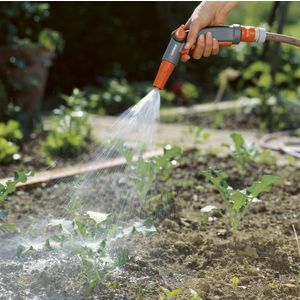
Pumpkin needs abundant watering during the period of mass flowering and fruit formation. The plant is watered under the root with warm water, set in the sun. Its temperature should not be lower than +20 ° С. Sprinkled with cold water, seedlings may die.
Watering should be alternated with loosening the soil near the base of the stem.To prevent the pumpkin from rotting, the plant's need for different periods of growth should be taken into account.
Pumpkin watering schedule:
- the plant is watered abundantly 1-2 times before the first loosening and hilling;
- the second watering is carried out in 2-3 weeks;
- as soon as female flowers appear, the pumpkin is watered every 7-10 days;
- in August, the number of procedures is reduced;
- the last watering is done 20-25 days before harvest.
Important! During the entire growing season, the plant is watered 5 to 10 times.
Arrangement of beds
You can avoid abundant watering if you properly equip the beds. Gardeners, who often water the plants, make large beds - at least three meters wide.
In regions with heavy rainfall, the height of the beds plays an important role. The higher they are, the more the pumpkin will protect from decay. This trick allows you to harvest an early harvest even on a rainy, cold summer.
The distance between climbing pumpkin varieties should be at least 150–300 cm. The distance between bushes is reduced to 70–100 cm.
Shrub varieties do not require formation. However, for better air and light penetration, it is better to remove the excess ovary, leaving 3-4 fruits per plant.
Plants grown outdoors, need pinching. The first procedure is carried out in July, when 1-2 ovaries with a diameter of 10 cm have already formed on the pumpkin.The larger the pumpkin, the less they should remain in the garden after pinching.
Blank and empty shoots must be cut out, leaving side ones, the length of which should not exceed 50 cm.
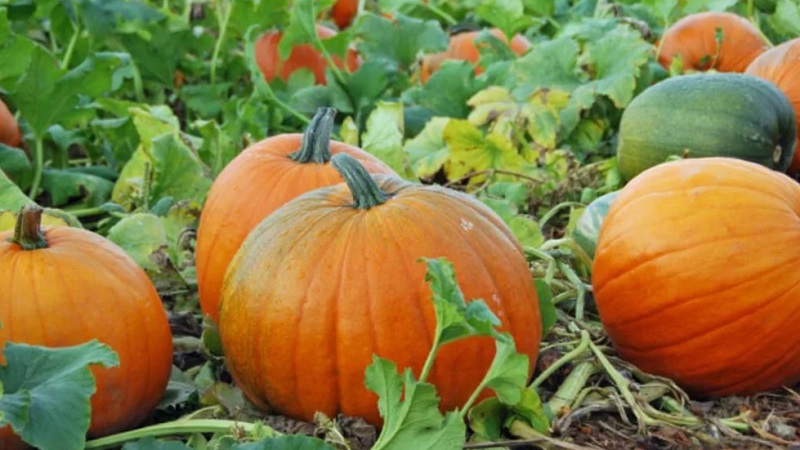
What to do with affected fetuses
Rotten vegetables are dangerous to human health. Heat treatment is not capable of neutralizing the waste products of fungi. Eating even a slightly rotten pumpkin can result in poisoning, affecting the kidneys, liver, gastrointestinal tract and nervous system.
If only the upper hard shell is damaged, and the pulp is not damaged, you can cut off the rotten area. However, you should take into account the risk factor when eating such a vegetable, so it is better to process it thermally.
Rotten pumpkin is suitable for composting. The most damaged parts of the fruit should be trimmed and the rest used for processing.
Preventive measures
Largely pumpkin harvest depends on what seeds the gardener used when planting. It is important to observe the rules of crop rotation and ensure good lighting.
Presowing seed treatment
Harvest care starts from the moment the seeds are prepared for sowing. For this you need: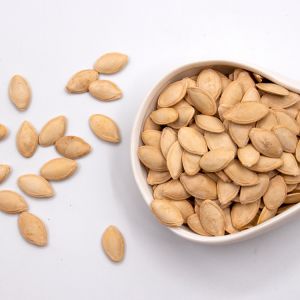
- Decontaminate the material. This can be done with a solution of potassium permanganate. Processing time is 30 minutes.
- Then you should select quality seeds by immersing them in a 25% saline solution. Empty seeds will float to the surface, ready to plant, sink to the bottom.
- Rinse the selected seeds with clean water.
- Dry the material at 55–60 ° C for three hours.
- In conclusion, the seeds must be bubbled for 18-24 hours - treated with water at a temperature of +20 ° C.
Compliance with the rules of crop rotation
Plants of the pumpkin family can be planted in their original place only after 4-5 years. The best predecessors of the culture are legumes and cruciferous plants. You can also plant a pumpkin after potatoes, cabbage and onions.
Crop beds should be set up away from melons, cucumbers and squash.
Good lighting
Lack of light leads to a decrease in the number of ovaries and pulling the plant up. Deficiency of sunlight provokes the development of fungal diseases, rot and pests.
It is important to provide plants with good light in the first phase of growth - from the moment the shoots appear until the true leaves. Seedling should be exposed to light 9-10 hours a day. This amount of time accelerates the formation of female flowers.
Important! For a fruiting plant, daylight hours should last at least 10-12 hours.
Tips from experienced summer residents
Vegetable growers are faced with other causes of pumpkin rot.It is important to understand what became its source, and for this it is necessary to identify where the fetal damage began.
How to determine the root of the problem and fix it:
- The problem of root rot after transhipment of seedlings is caused by the early application of nitrogenous fertilizers. Vegetable growers recommend starting to feed the plants when the soil temperature rises to + 12 ... + 13 ° С.
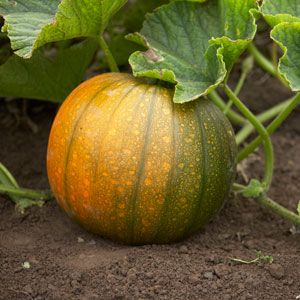
- Roots can start to rot due to damage while pulling out weak shoots. Weak branches are best cut near the ground.
- You can solve the problem of breaking off and rotting fruits by placing small pieces of fiberboard or planks under the pumpkins.
- Timely removal of wilted flowers and unformed ovaries protects the plant from diseases and pests.
- When the tops turn yellow, it is worth breaking off the affected leaves. The cut points must be sprinkled with crushed coal or treated with a solution of copper sulfate.
- Minor damage to the fetus can be sealed with a plaster.
- Even short-term frosts can affect plant health. In case of cold weather, a film or covering material will help protect young shoots.
Conclusion
Pumpkin is a tasty and healthy product that is used to prepare various dishes. Although it is a moisture-loving plant, abundant watering can cause fruit to rot. The absence of pollinating insects also affects productivity.
To get a rich harvest, you must follow the rules of crop rotation, carry out pre-sowing seed treatment and properly equip the beds.